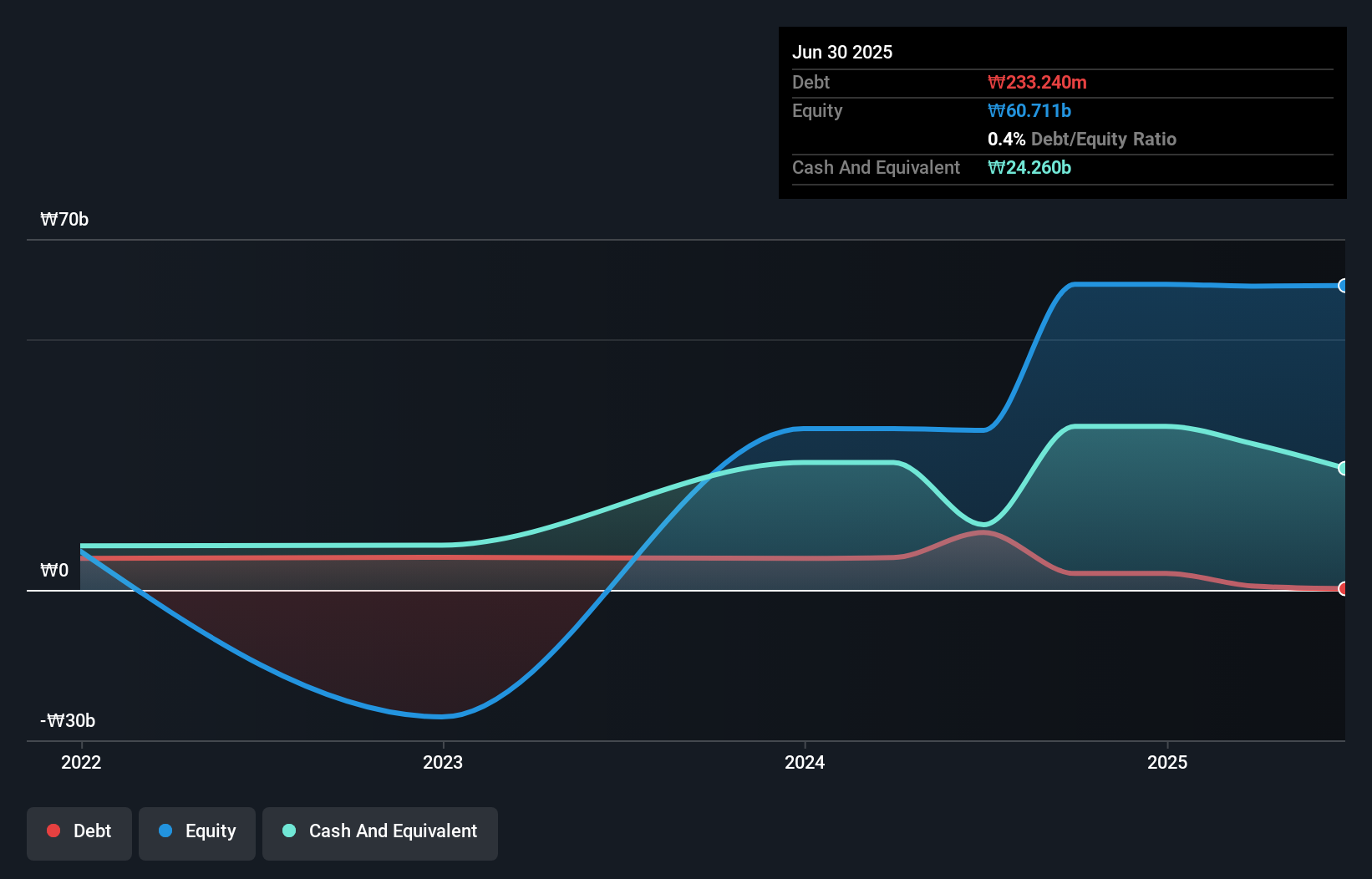- South Korea
- /
- Aerospace & Defense
- /
- KOSDAQ:A474170
We Think Lumir (KOSDAQ:474170) Needs To Drive Business Growth Carefully
We can readily understand why investors are attracted to unprofitable companies. For example, although software-as-a-service business Salesforce.com lost money for years while it grew recurring revenue, if you held shares since 2005, you'd have done very well indeed. Nonetheless, only a fool would ignore the risk that a loss making company burns through its cash too quickly.
So, the natural question for Lumir (KOSDAQ:474170) shareholders is whether they should be concerned by its rate of cash burn. In this report, we will consider the company's annual negative free cash flow, henceforth referring to it as the 'cash burn'. First, we'll determine its cash runway by comparing its cash burn with its cash reserves.
When Might Lumir Run Out Of Money?
A company's cash runway is calculated by dividing its cash hoard by its cash burn. As at June 2025, Lumir had cash of ₩24b and such minimal debt that we can ignore it for the purposes of this analysis. Looking at the last year, the company burnt through ₩27b. That means it had a cash runway of around 11 months as of June 2025. That's quite a short cash runway, indicating the company must either reduce its annual cash burn or replenish its cash. The image below shows how its cash balance has been changing over the last few years.

See our latest analysis for Lumir
How Well Is Lumir Growing?
Notably, Lumir actually ramped up its cash burn very hard and fast in the last year, by 102%, signifying heavy investment in the business. As if that's not bad enough, the operating revenue also dropped by 49%, making us very wary indeed. In light of the above-mentioned, we're pretty wary of the trajectory the company seems to be on. In reality, this article only makes a short study of the company's growth data. This graph of historic earnings and revenue shows how Lumir is building its business over time.
How Hard Would It Be For Lumir To Raise More Cash For Growth?
Since Lumir can't yet boast improving growth metrics, the market will likely be considering how it can raise more cash if need be. Issuing new shares, or taking on debt, are the most common ways for a listed company to raise more money for its business. One of the main advantages held by publicly listed companies is that they can sell shares to investors to raise cash and fund growth. By comparing a company's annual cash burn to its total market capitalisation, we can estimate roughly how many shares it would have to issue in order to run the company for another year (at the same burn rate).
Since it has a market capitalisation of ₩147b, Lumir's ₩27b in cash burn equates to about 18% of its market value. As a result, we'd venture that the company could raise more cash for growth without much trouble, albeit at the cost of some dilution.
Is Lumir's Cash Burn A Worry?
On this analysis of Lumir's cash burn, we think its cash burn relative to its market cap was reassuring, while its falling revenue has us a bit worried. Looking at the factors mentioned in this short report, we do think that its cash burn is a bit risky, and it does make us slightly nervous about the stock. On another note, Lumir has 2 warning signs (and 1 which can't be ignored) we think you should know about.
Of course Lumir may not be the best stock to buy. So you may wish to see this free collection of companies boasting high return on equity, or this list of stocks with high insider ownership.
New: AI Stock Screener & Alerts
Our new AI Stock Screener scans the market every day to uncover opportunities.
• Dividend Powerhouses (3%+ Yield)
• Undervalued Small Caps with Insider Buying
• High growth Tech and AI Companies
Or build your own from over 50 metrics.
Have feedback on this article? Concerned about the content? Get in touch with us directly. Alternatively, email editorial-team (at) simplywallst.com.
This article by Simply Wall St is general in nature. We provide commentary based on historical data and analyst forecasts only using an unbiased methodology and our articles are not intended to be financial advice. It does not constitute a recommendation to buy or sell any stock, and does not take account of your objectives, or your financial situation. We aim to bring you long-term focused analysis driven by fundamental data. Note that our analysis may not factor in the latest price-sensitive company announcements or qualitative material. Simply Wall St has no position in any stocks mentioned.
About KOSDAQ:A474170
Lumir
Engages in the satellite system development business in South Korea.
Mediocre balance sheet with very low risk.
Market Insights
Community Narratives



